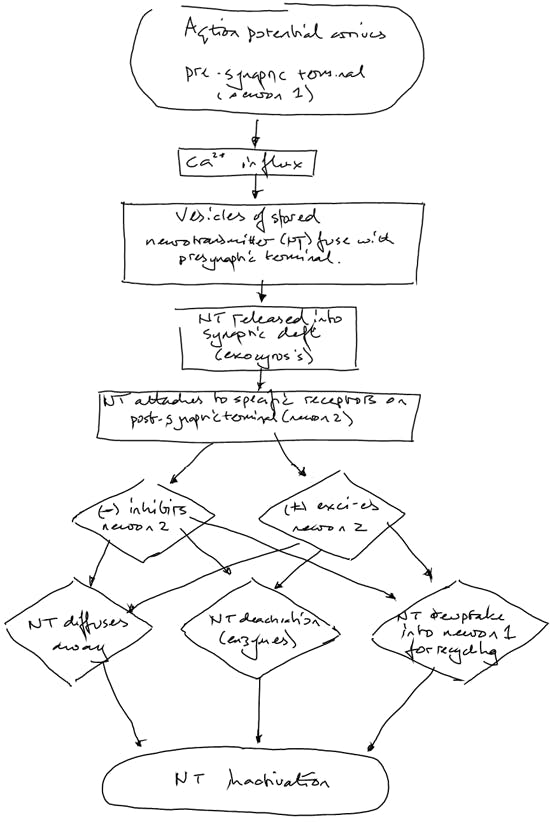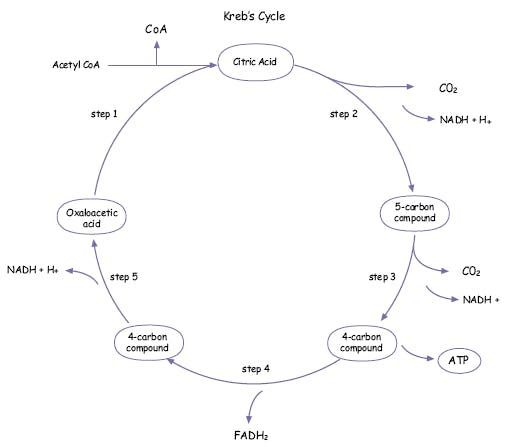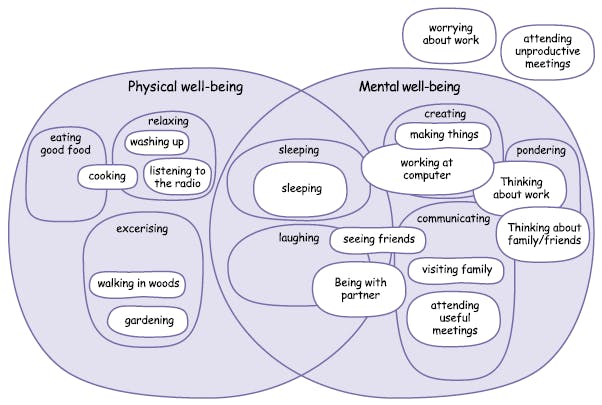Line diagrams and system maps Note-taking techniques
There are many visual methods you can use to help you take notes, and each has its particular strengths. The act of creating visual notes can help you think through and make sense of the material you're studying. Try a few methods and see which suit you.

Line diagrams
Line diagrams (such as flow diagrams) are used to represent the steps in a process without showing the detail. Flow charts use shapes to depict different categories - oval shapes indicate the start or end of a process, diamond shapes show when the route through the flow chart is affected by a decision or choice, and square shapes depict when an instruction is given or an action occurs.
This hand-drawn flow chart uses boxes and links between them to demonstrate the sequence of events at a synapse.

Krebs cycle
The Krebs cycle (also known as the citric acid cycle) is often depicted as a line diagram and it can be useful to show it in this way in your notes. Each step in the process is linked to the next by lines.
This diagram is an example of how a line diagram can be used in note-taking. Each item is linked to others by lines, in the Krebs cycle a circle is used to represent the process.

System maps
Systems maps capture the essence of a complex set of relationships. They help you see connections between things and are good for showing overlapping relationships. Try using colours and images or icons to depict things.
This diagram uses overlapping circles and ovals to represent how physical and mental well-being are related, for example, sleeping and laughing are shown to be important factors for both.